Related Research Articles
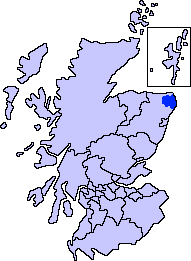
Buchan is an area of north-east Scotland, historically one of the original provinces of the Kingdom of Alba. It is now one of the six committee areas and administrative areas of Aberdeenshire Council, Scotland. These areas were created by the council in 1996, when the Aberdeenshire council area was created under the Local Government etc (Scotland) Act 1994. The council area was formed by merging three districts of the Grampian Region: Banff and Buchan, Gordon and Kincardine and Deeside. The committee area of Buchan was formed from part of the former district of Banff and Buchan.
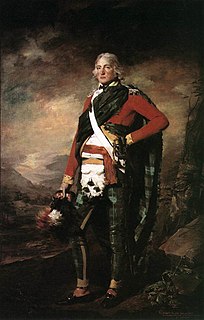
Sir John Sinclair of Ulbster, 1st Baronet,, was a British politician, a writer on both finance and agriculture, and the first person to use the word statistics in the English language, in his vast, pioneering work, Statistical Account of Scotland, in 21 volumes.

The River Ugie or Ugie Water is a river in North East Scotland; it flows into the North Sea on the east coast at Peterhead, north of Cruden Bay. There is considerable evidence of prehistoric settlement within the Ugie drainage basin, especially in the South Ugie Water catchment basin. For example, the Catto Long Barrow is found somewhat to the south of the Ugie Water mainstem.
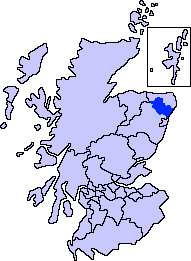
Formartine is a committee area in Aberdeenshire, Scotland. This district extends north from the River Don to the River Ythan. It has a population of 36,478.

Maud is a village in the Buchan area of the Scottish county of Aberdeenshire, with a population of 780. Located 13 miles (21 km) west of Peterhead on the South Ugie Water, Maud rose to prosperity after 1863 as a railway junction of the Formartine and Buchan Railway that ran through Maud to Fraserburgh and Peterhead, but has always been the meeting place of six roads. It has had a variety of names:

The name Bullers of Buchan refers both to a collapsed sea cave and to the adjacent village, situated about 6 miles (9.7 km) south of Peterhead in Buchan, Aberdeenshire, Scotland.

Deer Abbey was a Cistercian monastery in Buchan, Scotland. It was founded by 1219 AD with the patronage William Comyn, jure uxoris Earl of Buchan, who is also buried there. There was an earlier community of Scottish monks or priests, never numbering more than fifteen. The notitiae on the margins of the Book of Deer record grants made to the Scottish religious community in the 12th century and a claim that it was founded by Saint Columba and Saint Drostan. The old religious community was probably absorbed by the new foundation. The history of the abbey after the 1210s is obscure until the 16th century, when it was beginning to be secularized. The abbey was turned into a secular lordship for Commendator Robert Keith II in 1587.

Fetterangus is a small village in Aberdeenshire, Scotland, located just to the north of Mintlaw. Fetterangus is often called "Fishie", though the origin of this nickname is unknown.

The Davidian Revolution is a name given by many scholars to the changes which took place in the Kingdom of Scotland during the reign of David I (1124–1153). These included his foundation of burghs, implementation of the ideals of Gregorian Reform, foundation of monasteries, Normanisation of the Scottish government, and the introduction of feudalism through immigrant Norman and Anglo-Norman knights.
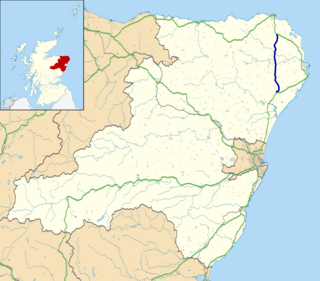
The A952 road is a main road in Aberdeenshire, Scotland. This roadway is a north–south connector that serves as an inland bypass to the more coastally aligned A90 road. It runs from Toll of Birness in the south to Cortes in the north, passing through the communities of Ardallie, Clola, Mintlaw and New Leeds. It has been noted that traffic accidents are most frequent at pronounced road bends along the A952.

Hatton is a village in Aberdeenshire, Scotland that lies on the A90 road, approximately equidistant from both Ellon and Peterhead.

St Combs is a small fishing village in Aberdeenshire, Scotland, immediately southwest of Inverallochy. It has existed since at least the 17th century, and takes its name from a church to St Colm that used to exist in the area and was abandoned in 1607. Only a fragment of it remains. The remains of Lonmay Castle are also in the area. The village sits across Loch Strathbeg from Rattray.
Longmanhill is a Bronze Age long barrow situated atop a prominent rounded landform in northern Aberdeenshire, Scotland near Banff Bay. Due to the low-lying coastal plain characteristics, the elevation of Longmanhill affords a long-distance view as far as the Moray Firth.
Laeca Burn is a stream in northeastern Aberdeenshire, Scotland. There are numerous archaeological sites in the Laeca Burn watershed, "especially on the eastern side of Laeca Burn", where Catto Long Barrow is situated.
Skelmuir Hill is a landform in Aberdeenshire, Scotland. This is the location of a trig point or official government survey marker. Skelmuir Hill is the site of some ancient standing stones; it is in the vicinity of another ancient monument, Catto Long Barrow.
The Hill of Aldie is an elevated landform in the east of Aberdeenshire, Scotland. Nearby is the prehistoric monument Catto Long Barrow.
Morris Wells are a series of natural springs in eastern Aberdeenshire, Scotland. This water source has historically been a water supply for the town of Peterhead.
A point d'appui, in military theory, is a location where troops are assembled prior to a battle. Often a monument is erected to commemorate the point d'appui for notable battles. In some battles there may be more than a single point d'appui.
The South Ugie Water is a tributary of the Ugie Water in northeastern Aberdeenshire, Scotland. To the south of the Ugie Water are a number of prehistoric monuments, evidencing the habitation of early man in the northeast of Scotland; for example, the Catto Long Barrow and a number of tumuli are situated in this locale.
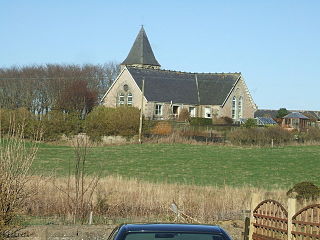
Clola is a hamlet in Buchan, Aberdeenshire, Scotland. Clola is situated on the A952 road. There is considerable evidence of local habitation by early man in the vicinity of Clola. Some of these nearby human traces are evident in Catto Long Barrow, a massive stone structure now surrounded by agricultural fields.
References
- AA Great Britain Road Atlas (2003) p. 57 ISBN 0-7495-3438-9
- Royal Highland and Agricultural Society of Scotland (1869) Transactions of the Highland and Agricultural Society of Scotland, published by W.Blackwood & Sons, ser.1 v.1-ser.3 v.2
- C. Michael Hogan (2008) Catto Long Barrow fieldnotes, The Modern Antiquarian
Coordinates: 57°24′32″N1°56′52″W / 57.4088°N 1.9478°W